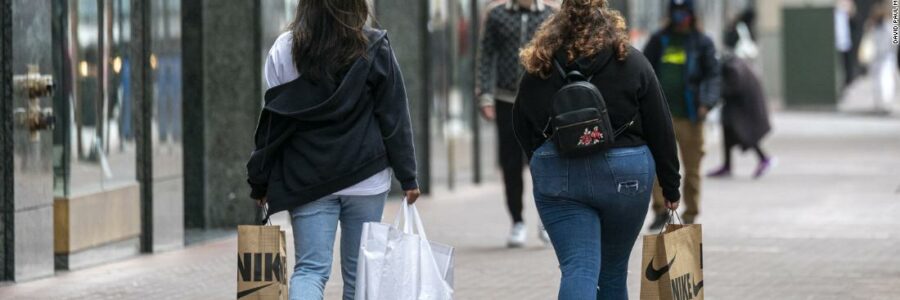
Supply chain snafus touch every corner of the economy
New York (CNN Business)A key measure of inflation hit a new 30-year high in August, the Bureau of Economic Analysis reported Friday.
The price index tracking consumer spending — the PCE price index — was up 4.3% over the 12 months ending in August. That was a faster pace than July’s 4.2%. Inflation continued to run at the fastest pace since January 1991.
Stripping out food and energy prices, which tend to be volatile, the inflation measure stood at 3.6%, where it has been since June. It remains the fastest rate of so-called core inflation since March 1991 and well above the Federal Reserve’s target of 2%.
The PCE inflation gauge is one of many, and they’re not all pointing in the same direction: The consumer price inflation index came off a 13-year high in August, for example. But the PCE index is the Federal Reserve’s preferred measure of inflation.
The continued surge in PCE inflation has led the Fed to signal that it will begin to wind down its emergency economic stimulus — even though the US economic recovery has shown signs of a slowdown in recent months.
Pay raises and price hikes
Although prices rose sharply, American incomes increased at only a modest pace, up 0.2% or $35.5 billion from the pior month in August. Disposable income was up by even less — just 0.1% or $18.8 billion.
These increases were partly due to higher wages as companies are trying to attract and retain workers while a shortage of labor is weighing on many businesses. In government benefits, the advance Child Tax Credit payments under the American Rescue Plan helped add to incomes. Friday’s report does not yet reflect the end to the enhanced pandemic unemployment benefits, which rolled off at the start of September.
And yet Americans kept going out to spend their cash. Consumer spending rose 0.8% or $130.5 billion between July and August, split pretty evenly between good and services.
“Households still have plenty left in the tank given rising employment and wages, soaring net worth (as home prices reach for the sky), and massive excess savings,” said BMO Senior Economist Sal Guatieri in a note to clients. “However, rising prices are eating into spending power,” he added.
Consumers remain the backbone of the US economy. If inflation got so high that people would rather save their money than spend it, America’s economy would be in a really tight spot.
That said, the rate of savings has soared during the pandemic. In August, it stood at 9.4%.
Given the ongoing threat of new Covid-19 infections through the Delta variant and the colder months with fewer outdoor activities looming, people’s services spending could get curtailed.
But for now consumers are feeling okay.
The University of Michigan’s consumer sentiment index for September beat expectations on Friday and rose from the Delta-driven slump in August.
Richard Curtin, the chief economist behind the survey, called it “depressed optimism,” adding that Americans have begun to postpone purchases due to high prices.
“Even if transient, higher inflation has already decreased living standards,” he said.
Source: Read Full Article